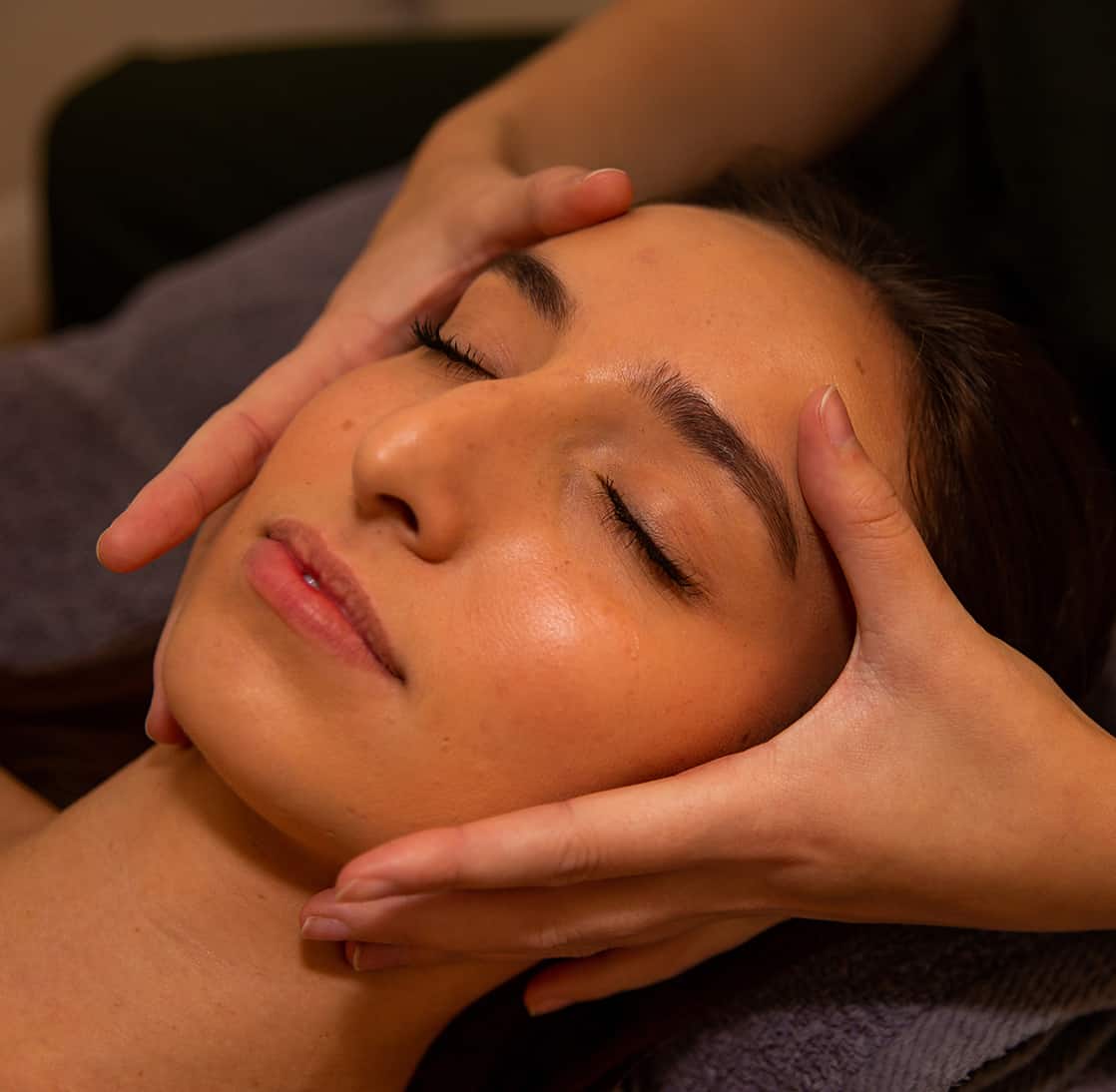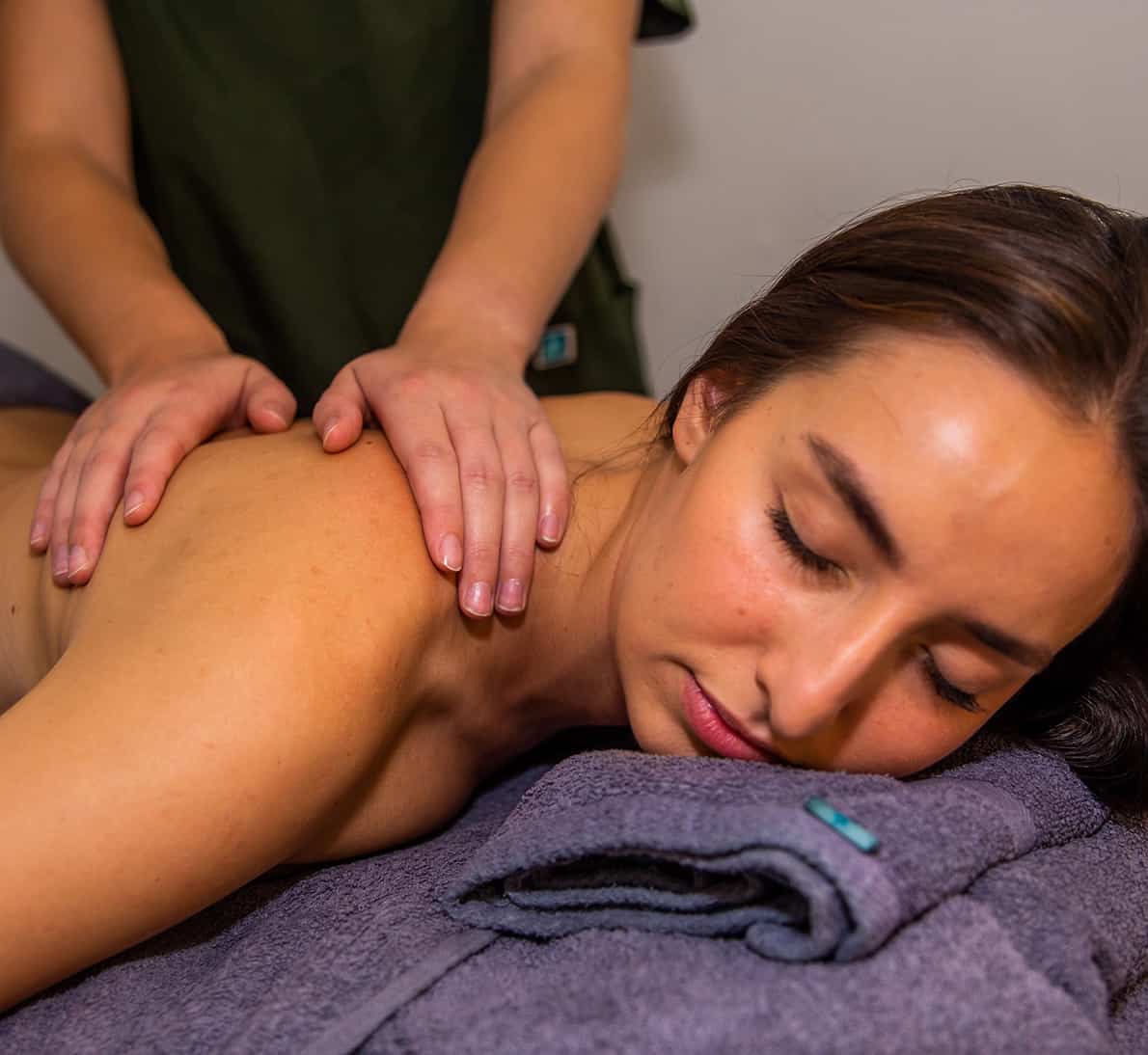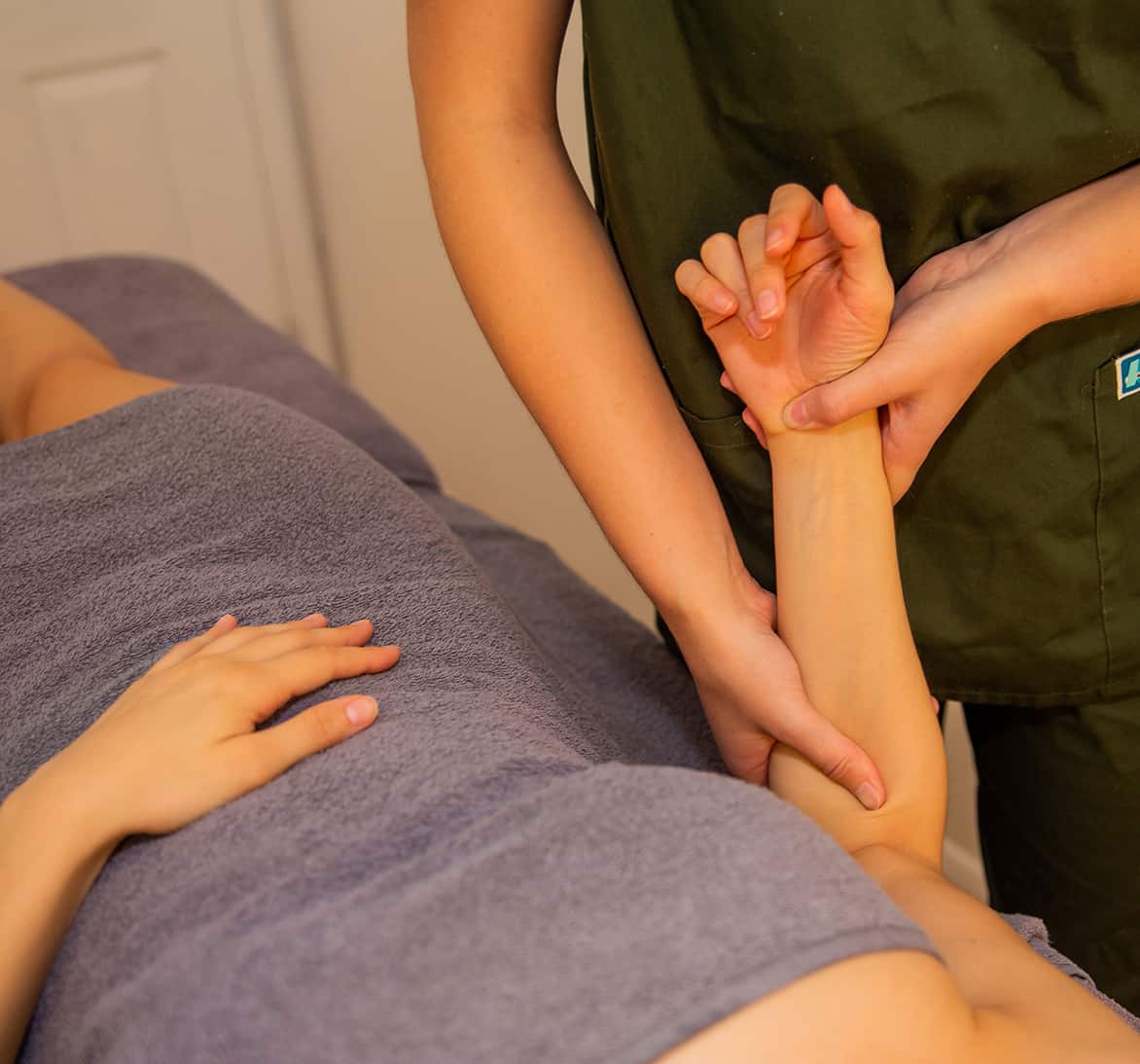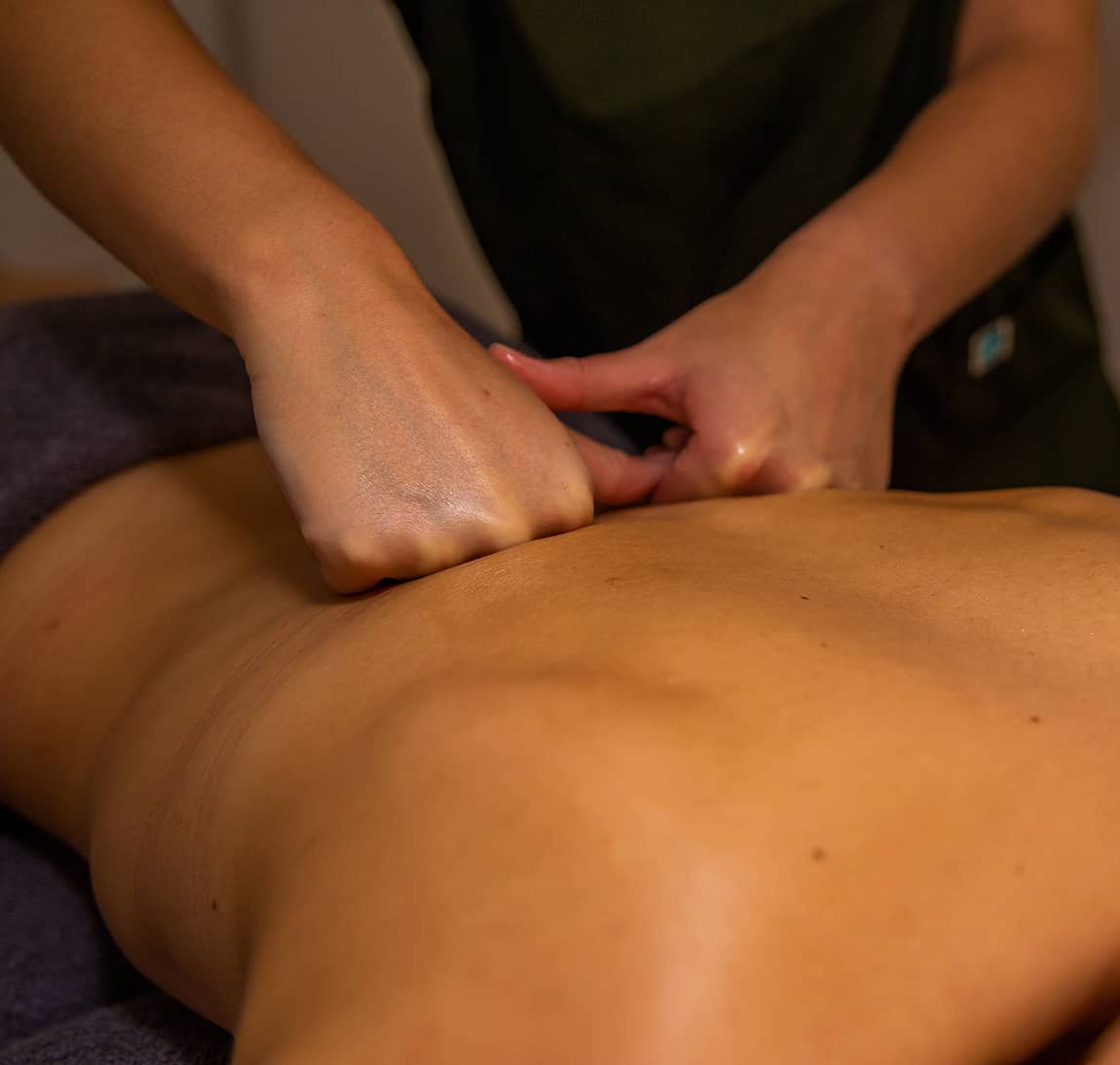
Massage is a therapeutic treatment that involves manipulation of the soft tissues of the body, in order to facilitate certain benefits such as relaxation and relief from aches and pains .
Massage could be considered one of the earliest and most primitive tools for treating pain, with its first uses documented in Ancient China, Greece, India and Rome. In the early 18th century, Per Hendrik Ling discovered what is now known as Swedish Massage, which laid the foundation for other forms of massage therapy to develop. Ling’s belief was that ‘vigorous massage could bring about healing by improving the circulation of blood and lymph’ however, over time, therapists have focused the benefits of general massage more around the psychological wellbeing of the patient, emphasising a feeling of ‘calmness’ using gentle flowing techniques.
Although Ling’s original discovery of massage evolved into a treatment for primarily relaxation purposes (Swedish Massage) his beliefs were not forgotten but instead channelled to form the understanding for what is now known as Deep Tissue Massage; a massage treatment that uses deep pressure to improve the function of the muscular system.
Deep Tissue Massage was nurtured in Ancient Greece and around the times of the first Olympics a new adapted version of the therapy evolved, which is now known as Sports Massage (3). With the aim of combining both physiological and psychological benefits, Sports Massage is used to further enhance the physical and mental capabilities of the body. For example, evidence has shown a 15-minute massage treatment to improve mood state in athletes that contributes to optimal mental focus for performance (5). In addition, athletes have found Sports Massage therapy can enhance the speed of muscle recovery; post exercise treatment has shown to increase the removal of lactate from the body, increasing the rate of recovery and reducing the presence of delayed onset of muscle soreness.
In the last 20 to 30 years, massage therapy has without a doubt become more popular and subsequent branches of massage have led to separate treatments specific to a particular body part or presenting condition.
Reflexology is one of the branches of general massage therapy. Unlike other massage treatments, Reflexology is focused on the feet and it involves massage in the form of pressure points, specifically to areas on the feet which correspond to areas or organs of the body; it aims to ‘improve damage or disease within the body by massaging the disordered reflex zones’.
Acupressure Massage is another branch off massage which uses traditional Chinese medicine theory and principles of yin, yang and chi from Acupuncture to address areas of pain or dysfunction. Meridians are channels within the body where energy to flows through; acupoints targeting these channels aims to clear blockages to alleviate pain and improve dysfunction . Studies suggest acupressure is effective at improving depression and fatigue. There is also strong research to suggest acupressure is very helpful for women postpartum to improve sleep quality, reducing stress and facilitating weight loss.
TMJ Massage is targeted massage focused on the jaw area, specifically the temporomandibular joint, to alleviate the symptoms of TMD (temporomandibular joint dysfunction). Evidence shows TMJ massage techniques to be highly effective in reducing the pain and symptoms commonly associated with TMD.
Low-back Pain (LBP) is arguably the most common condition to affecting 70-80% of adults in modern day society. Massage therapy has been proven to help with reducing pain and improving function, particularly during acute and sub-acute flare ups. When used alongside Osteopathy and Physiotherapy treatment, massage for low-back pain has been shown to provide good long-term benefits.
Posture malalignment is also very common and as a result of work or life demands on the body, most people suffer posture changes that can contribute to pain and dysfunction. Research suggests bad posture habits can lead to an increased risk of joint degeneration therefore even in the absence of pain, posture malalignment is a cause for concern. Massage can be used as a treatment modality within a Sports Therapy or Physiotherapy treatment plan to release and lengthen soft tissue structures that may be tight as a result of posture change.
It is clear that massage is useful in many ways and can have both effective short-term and long-term benefit when used in the right treatment plan. Call to book today and can advise you which treatment may be more appropriate to get you feeling as soon as possible.
By providing physical relaxation, massage can help to improve overall health and wellbeing. Enhancing energy and vitality, massage promotes a sense of calm that lowers blood pressure, heart and respiratory rate. This helps to destresses the body, boost the immune system and restore the mind; as a result, massage can also improve sleep quality and mood state, lessening depression, aggression and fatigue. Improved circulation with massage helps to nourish tissue cells with oxygen and facilitate waste removal of fluids like lactate and oedema which may slow healing and recovery processes of the body. Some massage techniques can promote better healing of ligament, tendon or muscle tears by working to lengthen and align tissue fibres and minimise scar tissue. Massage is commonly known to provide relief from tight muscles and knots which allows for improved flexibility and range of motion as well as overall better muscle function; by reducing muscle tightness, massage can also release nerve compression.
Sarah, a 34-year-old female and office worker, booked her first massage at the clinic because she was suffering from wrist pain as a result of carpal tunnel syndrome. Tension in her forearm muscles from repetitive strain created pressure around the nerves in the wrist and this caused symptoms of pins and needles, throbbing, weakness and numbness. From just one session of deep tissue massage, Sarah felt immediate relief and her symptoms were reduced and after a few consecutive treatments her symptoms Sarah was feeling a lot better, symptom free.
Daniel, a 21-year-old university student, initially presented with tension in his lumbar erector spinae muscles, likely caused by overtraining in the gym. He booked his first massage to help primarily with the pain he was experiencing from the lower back tension. Not only did the massage help to alleviate muscular tension, it also significantly improved the function of his lumbar spine and after just one treatment his range of motion has increased. Daniel reported feeling pain free as well as looser and more mobile in the area.

As you can see, there are many areas of the body that Massage can help with, however, it is not unusual for physiotherapists to also help with Asthma and other respiratory conditions, as well as neurological conditions such as Multiple Sclerosis and Parkinson's (3). Through targeted treatment and specific physical therapy, the physiotherapist will aim to get the patient back to optimum health.
Headaches can sometimes be caused or worsened by muscular tightness, primarily the suboccipital muscles which are located at the base of the skull and can create pressure around the occipital nerves, causing headache symptoms. Massage technique will help to release these muscles and alleviate the nerve pressure.


Massage can be an effective treatment modality Neck Pain when used alongside other methods within a treatment plan. Tension in the trapezius, scalene group and cervical erector spinae muscles are common contributors to neck pain therefore loosening these structures with massage therapy can provide relief.
Tension in the muscles that attach to the shoulder such as the pectoralis muscles, the biceps or any of the rotator cuff muscles, can cause Shoulder Pain. Tension may these occur in these muscles from overuse or poor posture habits. Relaxing and lengthening these muscles can offload the shoulder joint and reduce pain.


Forearm pain or pain in the wrist can be a result of tight wrist flexors/extensors from overuse. Massage techniques such as myofascial release can be beneficial to improve this tension and reduce pain. Similarly, upper arm pain or pain in the elbow can be a result of tightness in the biceps or triceps muscles; sometimes this tightness can cause the tendon that attaches the muscle to the elbow to become inflamed due to overload. Massage can help to minimise tension, lengthen muscles and offload the tendon to reduce pain.
Muscular tension through the thoracic erector spinae muscles can sometimes be the cause of mid back or thoracic spine pain. Massage can be used to work into the tension in this area, improving the function of this group of muscles and reducing pain symptoms.


Lower back pain can be caused by tightness in muscles such as the lumbar erector spinae group or the quadratus lumborum muscle. The tightness in these muscles can create compression in the lumbar spine and when nerve roots become affected pain can occur. Targeting these muscles with massage can help to decompress the lower back and ease pain.
Hip pain can be improved with massage. Tension in the quadriceps muscle can cause a tightening of the hip flexor tendon which can contribute to anterior hip pain. In a similar way, tightness of the TFL muscle, commonly caused by sitting down for long periods, can contribute to pain in the hip region. Massaging these structures can help to loosen and lengthen the soft tissues.


Tightness in the soft tissues that help to provide movement or stability and support at the knee joint can be a cause of knee pain; namely, the quadriceps, ITB, hamstrings or calf muscles. Massage to these areas will offload the joint and provide relief from knee pain.
Foot and Ankle pain can occur when muscles in the area become over worked. For example, pronation of the foot can lead to tightness in the peroneal muscles which can cause pain that refers from the lower leg into the lateral aspect of the foot. Massage techniques can be used to reduce the tightness and pain.
